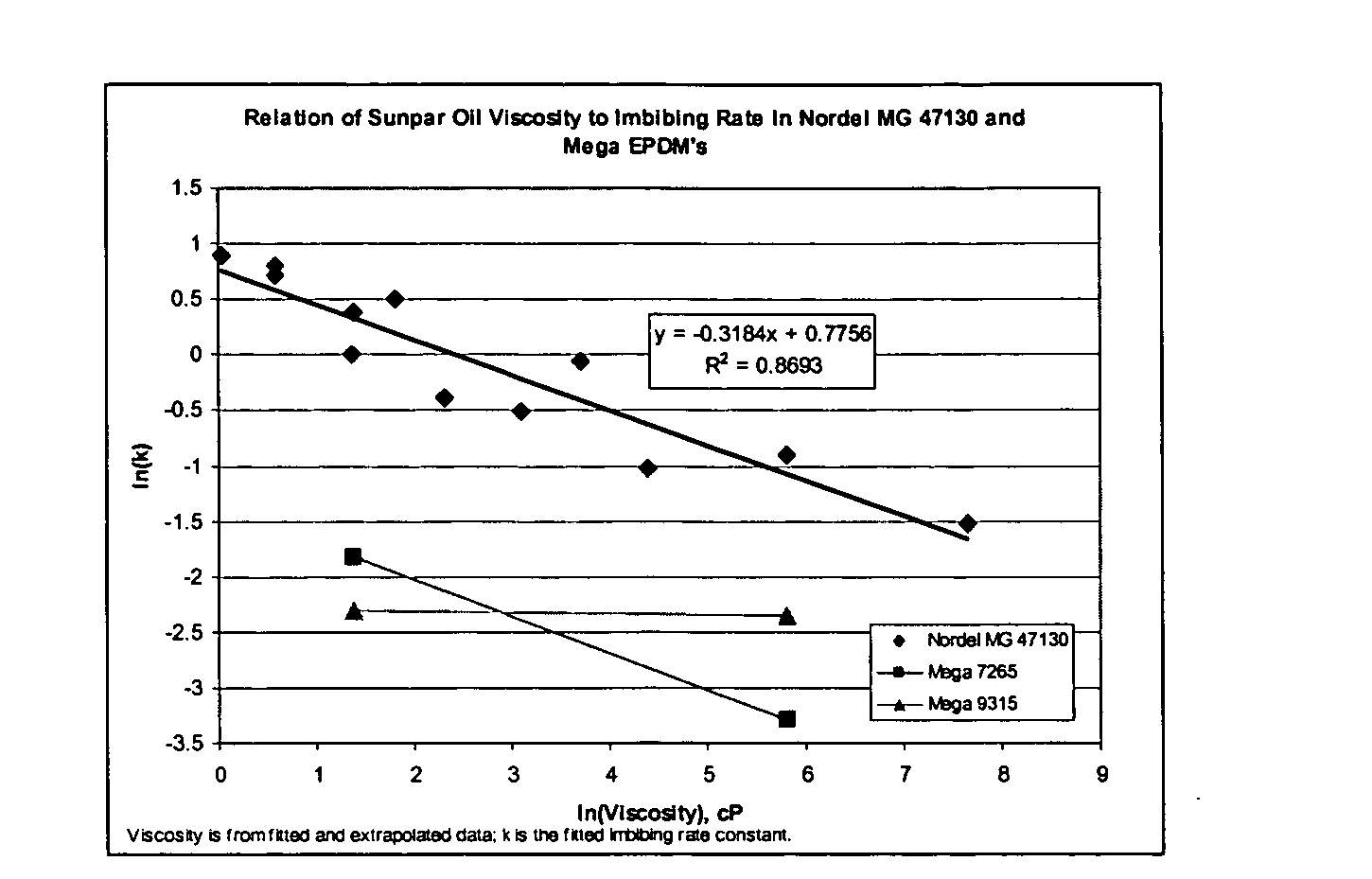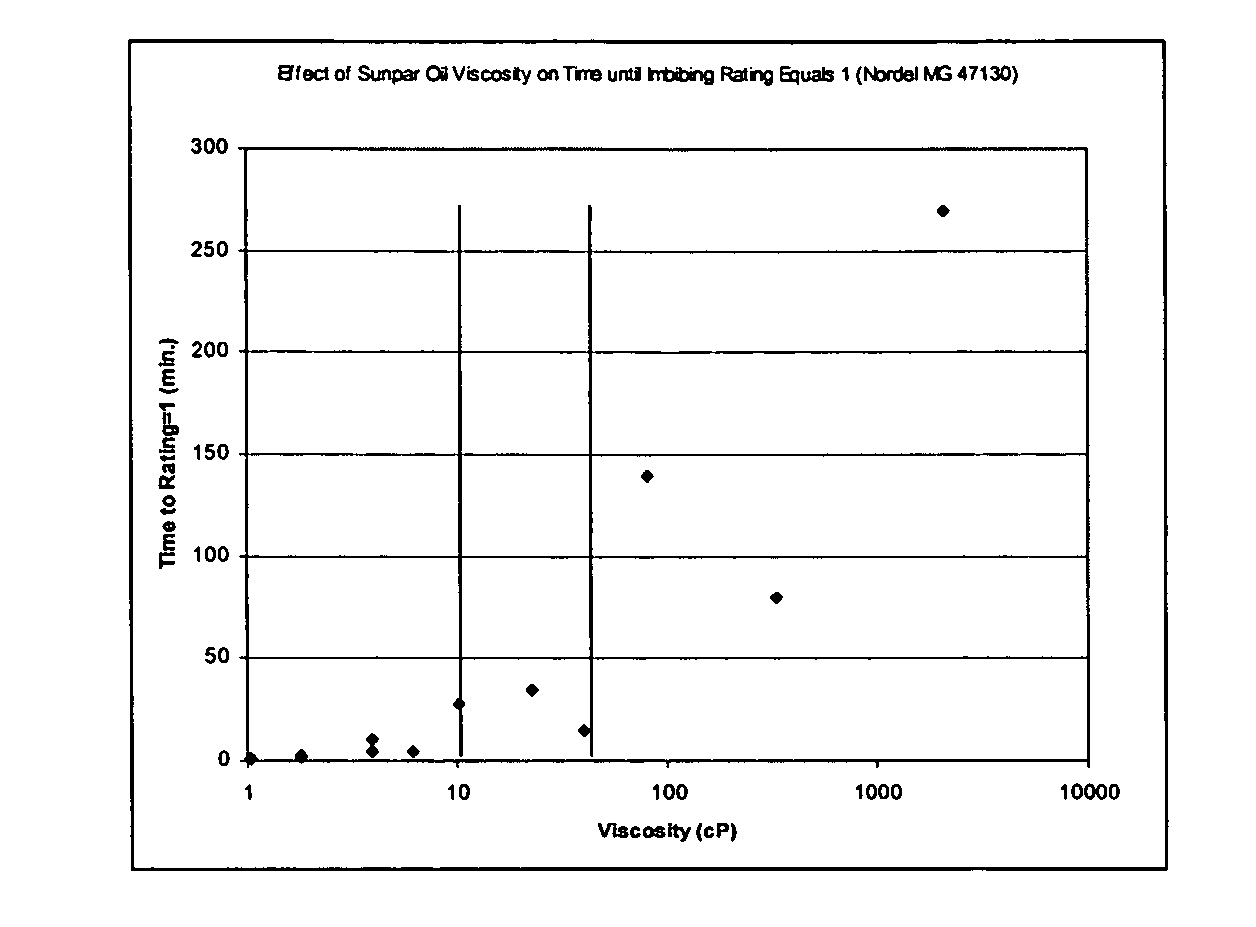Thermoplastic vulcanizates and process to prepare them
a technology of thermoplastic vulcanizates and vulcanizates, which is applied in the field of thermoplastic vulcanizates and process to prepare them, can solve the problems of relatively slow oil absorption, and achieve the effect of improving tensile properties and high molecular weigh
- Summary
- Abstract
- Description
- Claims
- Application Information
AI Technical Summary
Benefits of technology
Problems solved by technology
Method used
Image
Examples
examples
[0052] All dry mixing procedures were conducted using a KitchenAid mixer (Model KSM103WW) at lowest r.p.m. setting and a batter beater mixing accessory.
[0053] Mooney viscosity was measured on the EPDM containing the partitioning agent (essentially as it exits the gas phase process). From this measured Mooney a calculated Mooney was determined for the “neat” or pure polymer without the partitioning agent.
[0054] The term “phr” is pounds per hundred pounds EAODM polymer, (EAODM without partitioning agent)
[0055] The following oils were used in the Examples of the invention: [0056] Sunpar 110—(365 nominal MW) [0057] Sunpar 150—(517 nominal MW) [0058] Sunpar 2280—(690 nominal MW)
[0059] The EAODM used in Oil Imbibing Examples was a metallocene catalyzed particulate EPDM made in a gas phase process, containing 37 phr carbon black as process partitioning agent. The EPDM was comprised of 67 wt % ethylene, 29 wt % propylene and 4% ENB and had a calculated Mooney viscosity of 130 (EPDM-1). ...
example 2
[0084] All ingredients except the phenolic curative and stannous chloride dihydrate were added to the KitchenAid mixer at ambient temperature (about 23 C) and mixed until evenly distributed (<60 seconds), using the KitchenAid mixer with batter blade at lowest rpm setting. The mixture was immediately added to a Haake Rheomix 3000 mixing bowl with roller style blades and mixed at 30 rpm and 190° C. for approximately 3 minutes, then the rotor speed was increased to 75 rpm and processing continued for an additional 5 minutes. The curatives (SP1045 and stannous chloride dihydrate) were added, and mixing was continued at 75 rpm until the torque leveled off (approximately 3 minutes). The resulting TPV was roll-milled on a Reliable roll mill at 190° C. nominal temperature for 10 passes, sheeted off, then compression molded at 190° C. for 2 minutes at 1000 psi pressure followed by 4 minutes at 30,000 psi, then cooled in chilled platens at 30,000 psi for 4 minutes. Tensile specimens were cut ...
examples 3-5
[0088] The high MW EPDM used in Example 3 and Comparative Examples B and C was the same as for Example 2. Polypropylene was PD191 (a nominal 0.7 MFI homopolymer in pelletized form). Except for the PP, the formulation was identical to that used in Examples 1-2
PUM
| Property | Measurement | Unit |
|---|---|---|
| weight percent | aaaaa | aaaaa |
| weight percent | aaaaa | aaaaa |
| temperature | aaaaa | aaaaa |
Abstract
Description
Claims
Application Information
 Login to View More
Login to View More - R&D
- Intellectual Property
- Life Sciences
- Materials
- Tech Scout
- Unparalleled Data Quality
- Higher Quality Content
- 60% Fewer Hallucinations
Browse by: Latest US Patents, China's latest patents, Technical Efficacy Thesaurus, Application Domain, Technology Topic, Popular Technical Reports.
© 2025 PatSnap. All rights reserved.Legal|Privacy policy|Modern Slavery Act Transparency Statement|Sitemap|About US| Contact US: help@patsnap.com


